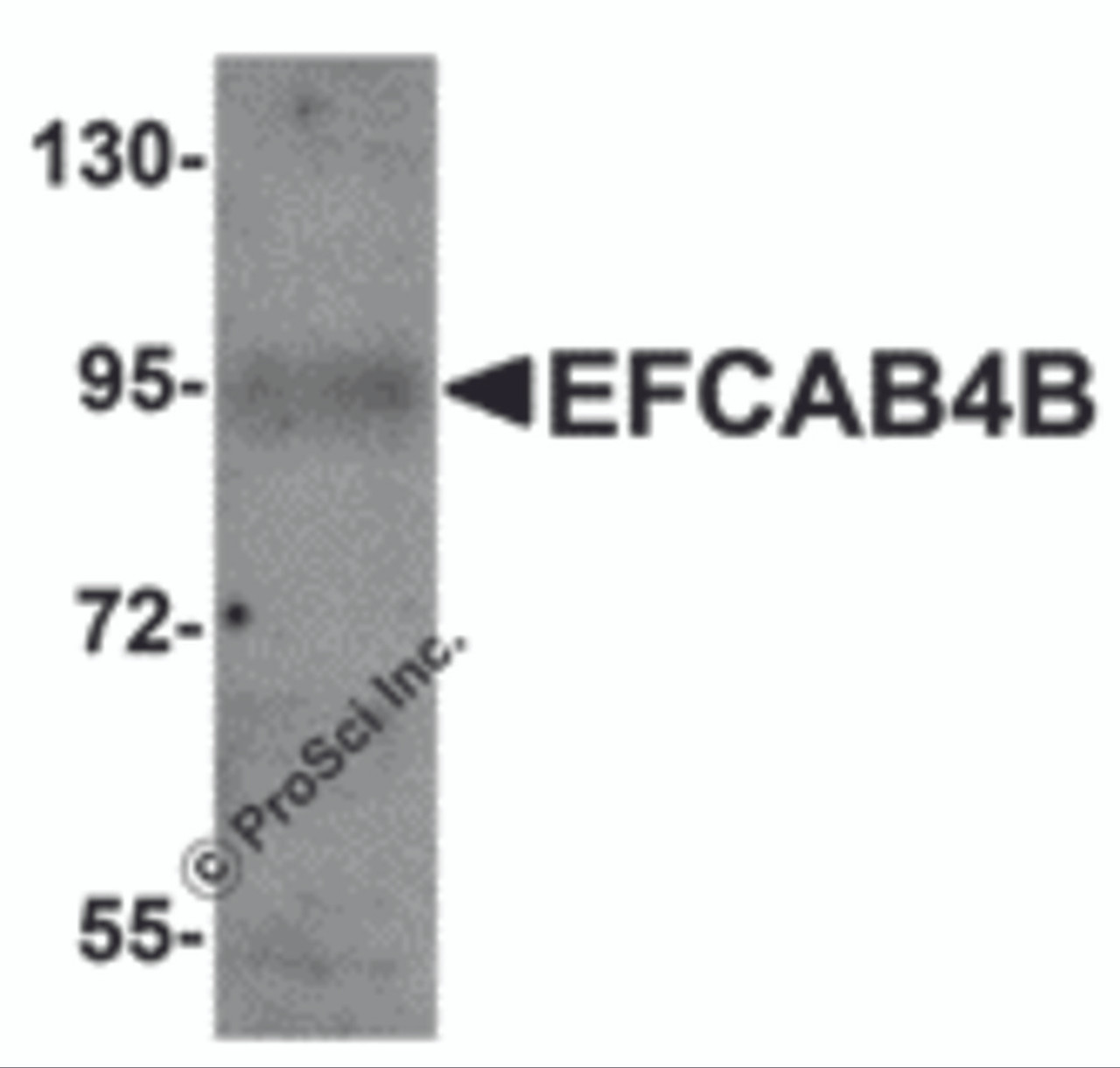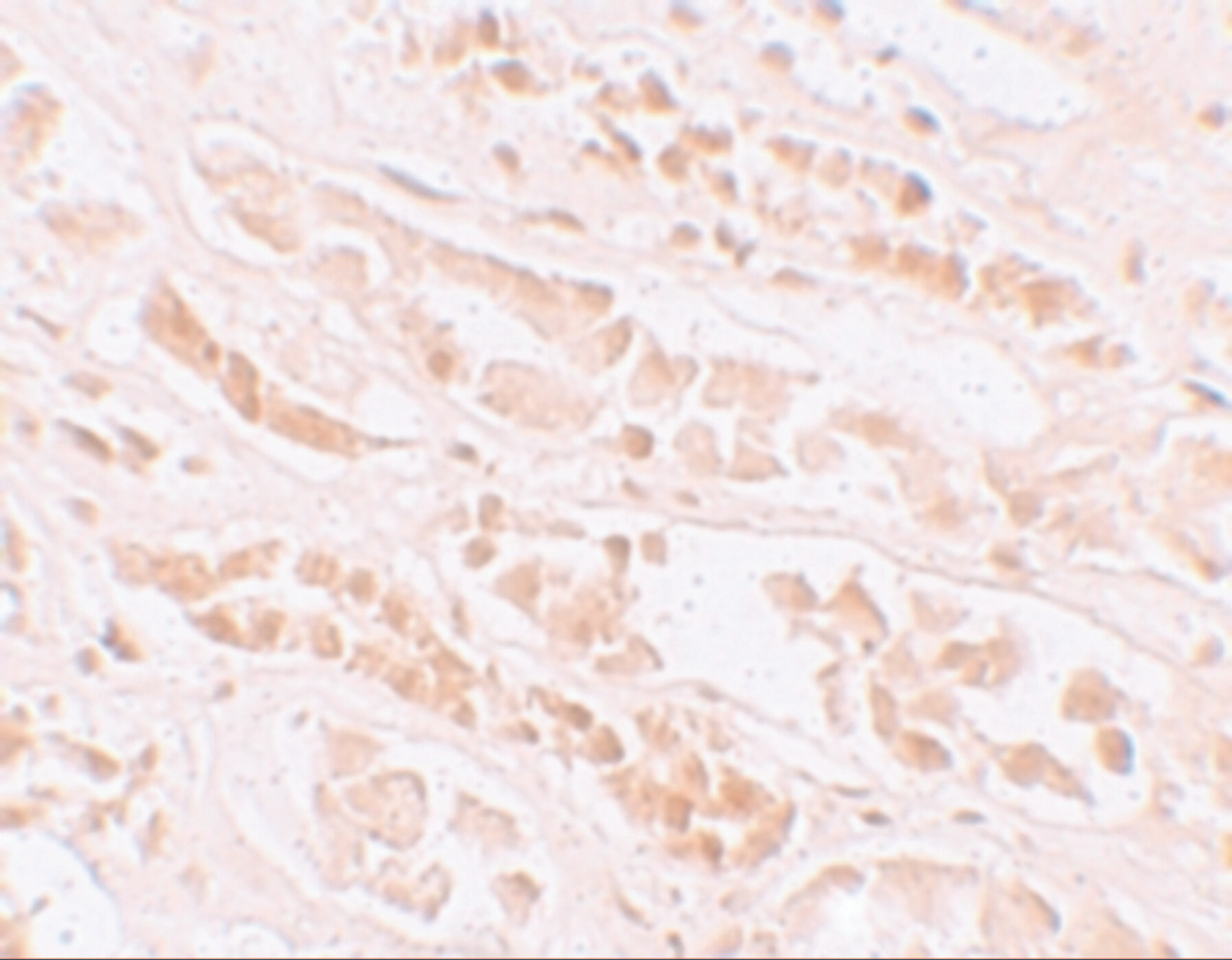Product Description
EFCAB4B Antibody | 6045 | ProSci
Host: Rabbit
Reactivity: Human, Mouse
Homology: N/A
Immunogen: EFCAB4B antibody was raised against a 14 amino acid synthetic peptide near the carboxy terminus of human EFCAB4B.
The immunogen is located within amino acids 640 - 690 of EFCAB4B.
Research Area: Immunology
Tested Application: E, WB, IHC-P, IF
Application: EFCAB4B antibody can be used for detection of EFCAB4B by Western blot at 1 μg/mL. Antibody can also be used for immunohistochemistry starting at 10 μg/mL. For immunofluorescence start at 20 μg/mL.
Antibody validated: Western Blot in mouse samples; Immunohistochemistry in human samples and Immunofluorescence in human samples. All other applications and species not yet tested.
Specificiy: N/A
Positive Control 1: Cat. No. 1405 - Mouse Kidney Tissue Lysate
Positive Control 2: Cat. No. 10-401 - Human Kidney Tissue Slide
Positive Control 3: N/A
Positive Control 4: N/A
Positive Control 5: N/A
Positive Control 6: N/A
Molecular Weight: N/A
Validation: N/A
Isoform: N/A
Purification: EFCAB4B Antibody is affinity chromatography purified via peptide column.
Clonality: Polyclonal
Clone: N/A
Isotype: IgG
Conjugate: Unconjugated
Physical State: Liquid
Buffer: EFCAB4B Antibody is supplied in PBS containing 0.02% sodium azide.
Concentration: 1 mg/mL
Storage Condition: EFCAB4B antibody can be stored at 4˚C for three months and -20˚C, stable for up to one year. As with all antibodies care should be taken to avoid repeated freeze thaw cycles. Antibodies should not be exposed to prolonged high temperatures.
Alternate Name: EFCAB4B Antibody: CRACR2A, CRACR2A, EF-hand calcium-binding domain-containing protein 4B, Calcium release-activated calcium channel regulator 2A, CRAC channel regulator 2A
User Note: Optimal dilutions for each application to be determined by the researcher.
BACKGROUND: EFCAB4B Antibody: EFCAB4B, also known as Calcium release-activated calcium channel regulator 2A, is a novel Ca2+-binding EF-hand protein that is thought to play a key role in store-operated Ca2+ entry in T-cells by regulating CRAC channel activation. EFCAB4B acts as a cytoplasmic calcium-sensor that forms a complex with ORAI1 and STIM1 at the junctional regions between the plasma membrane and the endoplasmic reticulum upon low Ca2+ concentration. A closely related protein, EFCAB4A, is likely to play a similar role as EFCAB4B, but the detailed function of EFCAB4A is still under investigation.
 Euro
Euro
 USD
USD
 British Pound
British Pound
 NULL
NULL











![EFCAB4B Antibody (N-term) [APR15801G] EFCAB4B Antibody (N-term) [APR15801G]](https://cdn11.bigcommerce.com/s-452hpg8iuh/images/stencil/500x659/products/865857/1157924/logo__92149.1659788186__47195.1659862850.png?c=2)




